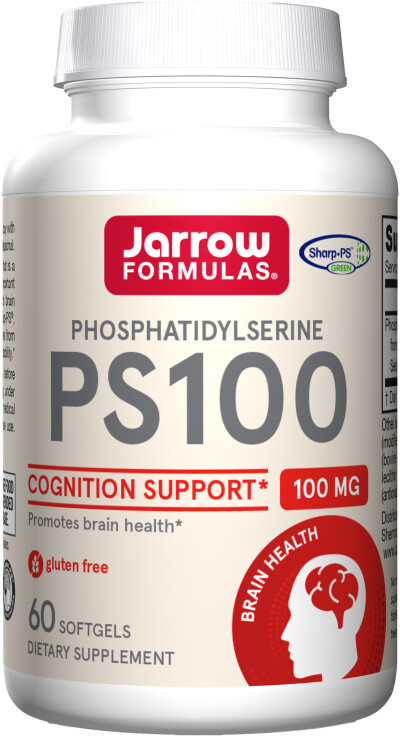5 Best Phosphatidylserine capsules

- Contains 100 mg phosphatidylserine per softgel
- Free from soy

- Contains 100 mg of phosphatidylserine per capsule
- Without additives that hinder absorption or cause allergies

- Contains 100 mg of phosphatidylserine per capsule
- Suitable for vegetarians and vegans

- Contains 50 mg phosphatidylserine per capsule
- Suitable for vegetarians and vegans

- Formula for the brain
- Contains sage, blueberry complex, ashwagandha, phosphatidylserine and uridine
Buy the best Phosphatidylserine supplements here. Or find answers to all your questions about Phosphatidylserine below.
What is phosphatidylserine?

Phosphatidylserine, like the well-known phosphatidylcholine, is a phospholipid, a fat-like substance that performs numerous functions in the body.
Phosphatidylserine is a phospholipid found on the inside of a cell's membrane.
The average dietary intake is about 130 mg per day. It is mainly found in brain, organs and oily fish.
Phosphatidylserine is a substance found in all cell membranes in the body and particularly in the brain. It is a phospholipid. These are important components of cell membranes and part of various cellular functions.
What does phosphatidylserine do?
In the EU, only the following health claim is allowed for phosphatidylserine: "phosphatidylserine contributes to the maintenance of normal brain function."
How much should you take per day?
The recommended daily dose of phosphatidylserine varies, but most studies use doses ranging from 100 to 300 mg per day. It is important to follow the recommended dosage on the product label or as advised by a physician or therapist.
When is the best time to take phosphatidylserine?
It is best to take phosphatidylserine with a meal. This ensures better absorption.
What are the side effects of phosphatidylserine?
Phosphatidylserine is generally considered safe when taken in the recommended doses. Some people may experience side effects such as nausea, diarrhea or insomnia, but these are rare and usually mild.
Who should not use phosphatidylserine?
Phosphatidylserine is not recommended for people with liver or kidney problems, as well as pregnant or breastfeeding women, without first consulting a doctor.
What foods contain phosphatidylserine?
Phosphatidylserine is found in small amounts in soybeans, dairy products, chicken and fish and, of course, lecithin. However, the amount of phosphatidylserine in these is lower than the dose in dietary supplements.
What is the difference between phosphatidylserine and phosphatidylcholine?
Phosphatidylcholine and phosphatidylserine are both phospholipids, which are compounds that form cell membranes in the body. However, they differ in their structure and functions:
- Structure:Phosphatidylcholine contains choline as its main group, while phosphatidylserine contains serine.
- Location: Phosphatidylcholine is found in high concentrations in liver and egg yolks, while phosphatidylserine is mainly found in the brain.
- Functions: Phosphatidylcholine plays a role in fat metabolism, liver function and cell membrane synthesis, while phosphatidylserine is involved in cellular communication and neurotransmitter metabolism, particularly in the brain.
Related categories:
Written by: Wouter Olthof
Reviewed by: Peter Smeets
Updated: February 7, 2023
